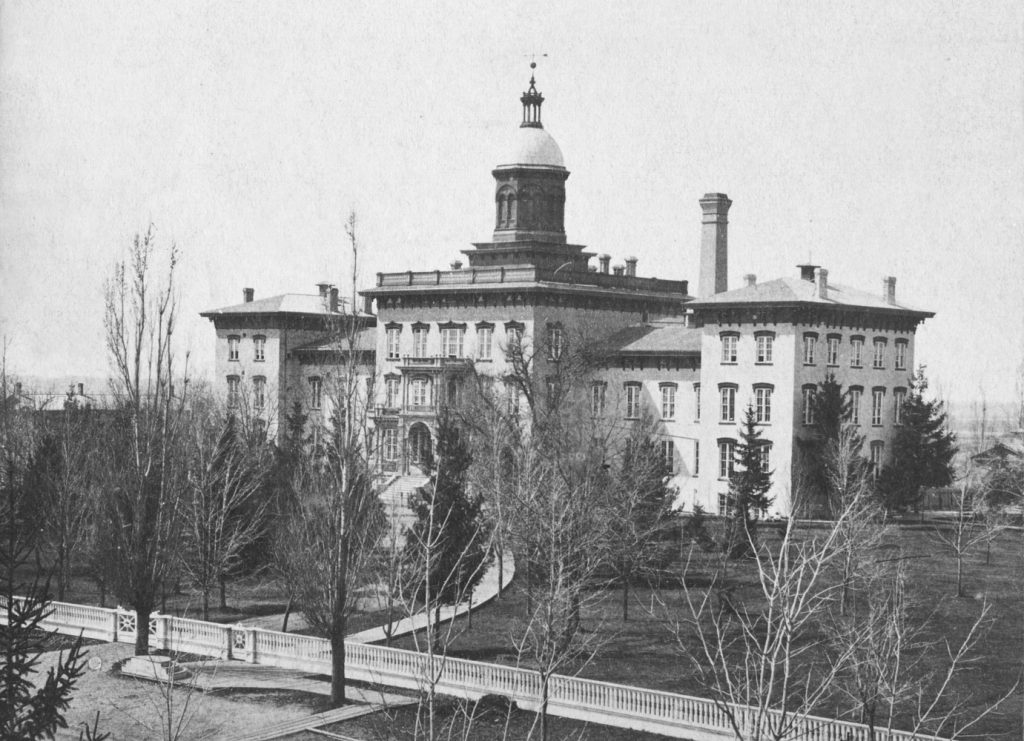WSD History

In 1839, Ebenezer Chesebro moved his family from New York to the Delavan, Wisconsin area. The Chesebro family had a daughter, Ariadna, who was deaf and had attended the New York Institute for the Deaf and Dumb (NYI). In 1850 the Chesebros hired Wealthy Hawes to teach their daughter and a neighbor boy who was also deaf. Hawes, who lived nearby, was hard of hearing, and a graduate of the New York Institute. Ariadna Chesebro is known as The Face That Launched WSD.
The Chesebros invited John A. Mills, also an NYI graduate, to take Hawes’s place in 1851. With the area’s increase in population, the school had grown to eight children and the Chesebros decided they could no longer afford to privately finance the education of their daughter and the other students.
In 1852, with the help of their friends and neighbors, they submitted a petition to the Wisconsin legislature requesting the establishment of a school for the deaf. Franklin K. Phoenix, a neighbor and close friend of the Chesebros, offered to donate to the state all the land necessary for the school. The governor signed the law appropriating funds for a school building, staff, and general operating expenses on April 19, 1852.
The Wisconsin School for the Deaf has been in continuous operation since its founding, and has operated since 1939 as a bureau of the state Department of Public Instruction. The school is a part of the state system of public education and as such has the same standards as those set forth by the Department of Public Instruction for all schools in Wisconsin. WSD also serves as a resource on deaf education for all Wisconsin school districts.
WSD Museum
The museum at WSD preserves WSD’s history through the many artifacts and photographs that are on display. The museum is located in Huff Hall (previously located in Kastner Hall), and is open to the public during special events and by appointment only.
For group tours:
Tina Scott
VP: 262-725-0261
For private museum tours, donations and questions:
Casey Kelly
VP: (262) 725-0268
For genealogical/research questions:
Casey Kelly Nell Fleming
VP: (262) 725-0268 V/TTY: 262-728-7133
VP: 262-394-1216
